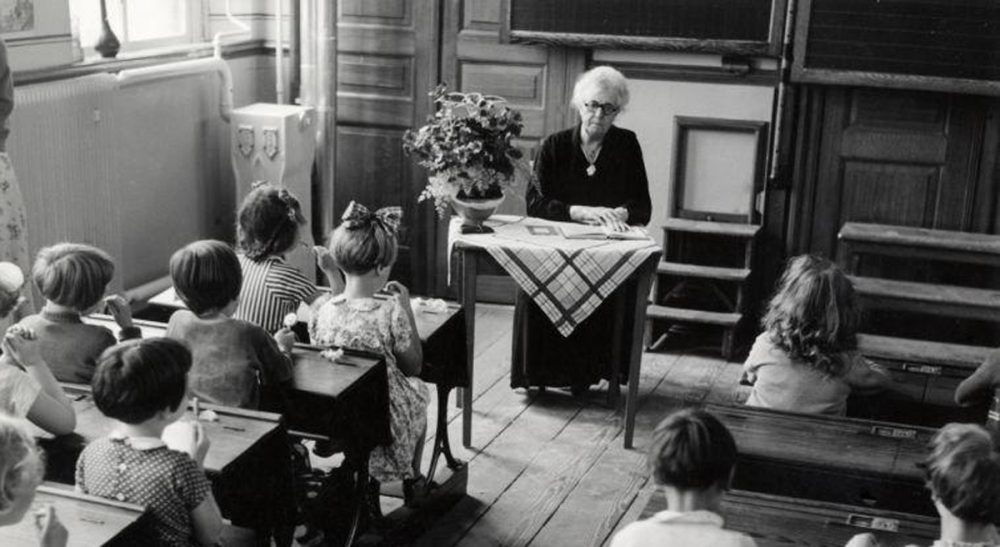Advertisement
Lesson From A Tuned-Out Classroom: Talking Isn't Teaching

Picture this: A megaphone-wielding teacher blasts a tuned-out teenager. That visual might exaggerate the point I want to make, but in classrooms across the country, teachers are talking, talking, talking, while their students are tuning out. That’s because, in spite of all the research and all the insights we have gained over the past twenty years into the complex mysteries of the brain and how it learns, the way most people still think about education is that teaching is talking and learning is listening. Students not learning? Talk louder.
By now, however, most educators seem to understand that the least effective teaching method is the lecture. In the classroom, the one doing the talking is the one doing the learning. That means that teachers get the best educations, while students get quality time with their iPods or text messages. Many teachers keep talking, anyway.
In the classroom, the one doing the talking is the one doing the learning. That means that teachers get the best educations, while students get quality time with their iPods or text messages.
When I was an eager new English teacher in the late '70s, Moby Dick was on my juniors’ reading list. English teachers tend to talk about "teaching a book," and I wondered how I would teach this one. I read and reread and studied the book for hours each night, struggling with some of the chapters. I recall going into one class having finally made some sense of the chapter called “The Whiteness of the Whale.” I was excited, and amid my chatter, something about the novel clicked, and all sorts of connections became clear. I left the class elated and talked with my colleagues in the English office about how much the kids had learned that day. Of course, they had learned nothing; it was I who had learned so much. They had been my audience.
It’s hardly surprising that teachers think about teaching as the delivery of knowledge. Most of us are accustomed to this model, having experienced it for at least sixteen years in schools and colleges. The conferences and workshops we attend are designed primarily as lectures and presentations. Even at the Learning and the Brain Conferences (and in workshops that I have guiltily led), where people should know better, participants run a gauntlet of exhausting lectures, many lasting up to three hours. The difference between the professionals and our students is that we want to learn the stuff at the workshops. Even so, our retention of the material is not impressive.
As the evidence mounts that talking at students is ineffective, many teachers have incorporated discussions into some classes. But too many of these tend to be lectures in disguise, exercises in guessing what is in the teacher’s head. Many teachers are like lawyers: they never ask a question to which they don’t know the answer.
I keep hoping for evidence that the next generation of teachers will reject the tired, old approaches, but over the years, I have interviewed hundreds of teacher candidates, and each of them has given an identical response to one question: “Why do you want to be a teacher?” “Because,” they invariably say, “I want to share my knowledge with students.” If anything, the younger teachers I interview seem even more committed to talking-as-teaching.
Educators need to explore how to design teaching strategies and school structures to reflect the needs of learners, not the needs of teachers.
Yet, as some teachers and a few schools have discovered, effective teaching requires an understanding of how learning occurs. Researchers like Mary Helen Immordino-Yang at the University of Southern California and Kurt Fischer at Harvard have written extensively about the role of emotion in learning; the infinite variability between individual brains; the need for learners to do the hard, active work of building and rebuilding new neural networks instead of listening passively or merely memorizing; the connection between performance and context; the essential role of regression (what teachers misinterpret as "failure"); and so much more. Each insight into learning challenges traditional assumptions that schools continue to protect.
Educators need to explore how to design teaching strategies and school structures to reflect the needs of learners, not the needs of teachers. Tinkering with the old structures is not enough—a little discussion, a little group work, moments of activity, occasional projects. The old structures reflect a tired concept of teaching as the delivery of information. As new research provides new insights into the workings of the brain, schools need to be completely rethought to embody new concepts of learning. Teachers and researchers may someday work together to design schools that look like teaching hospitals—places that bring together teachers, researchers, teachers-in-training, students and even parents.
In the meantime, teachers might benefit from thinking more about learning and less about teaching.
Related:
